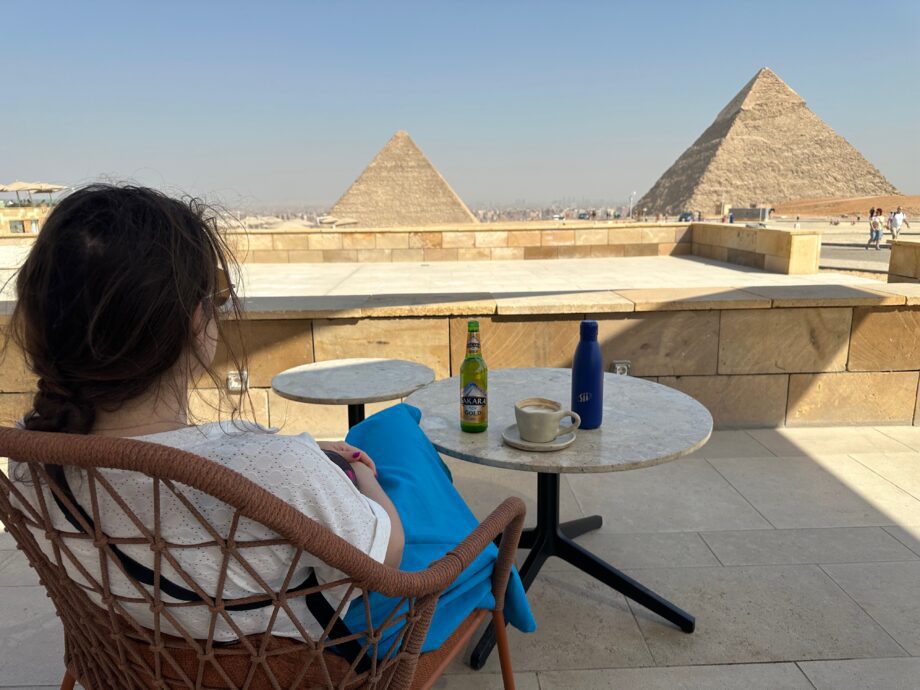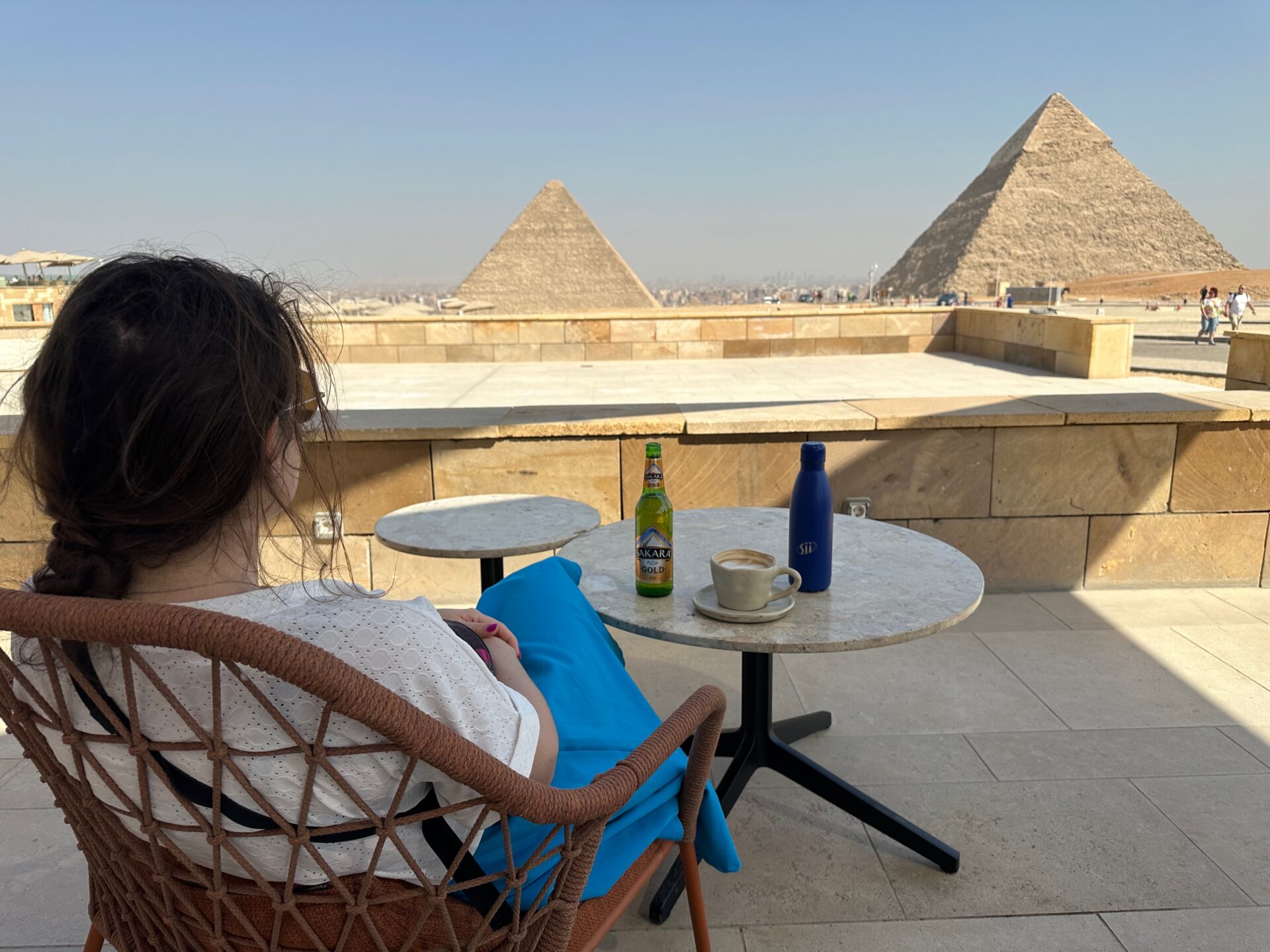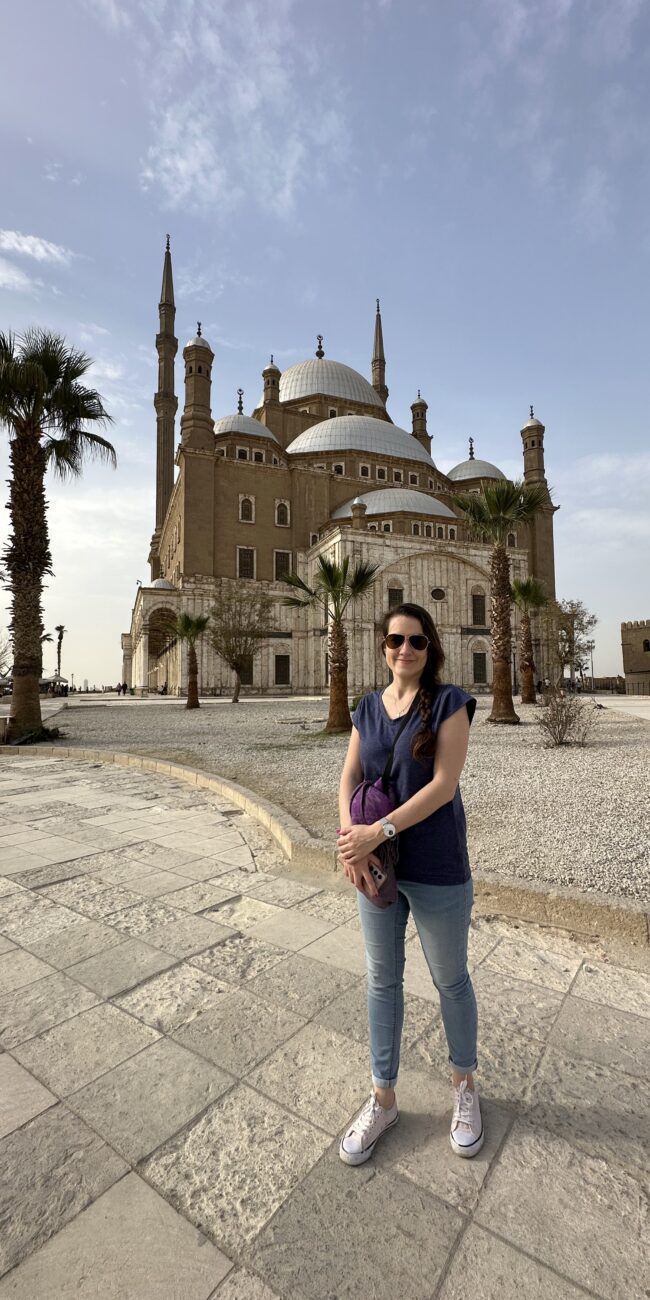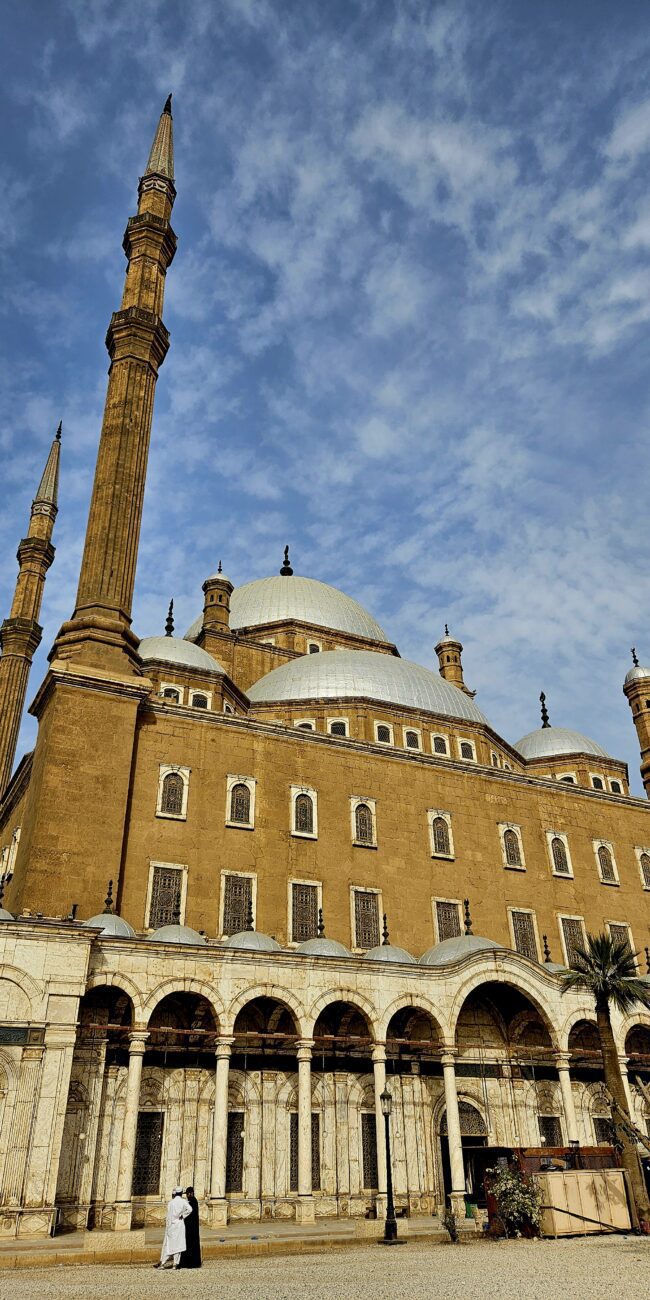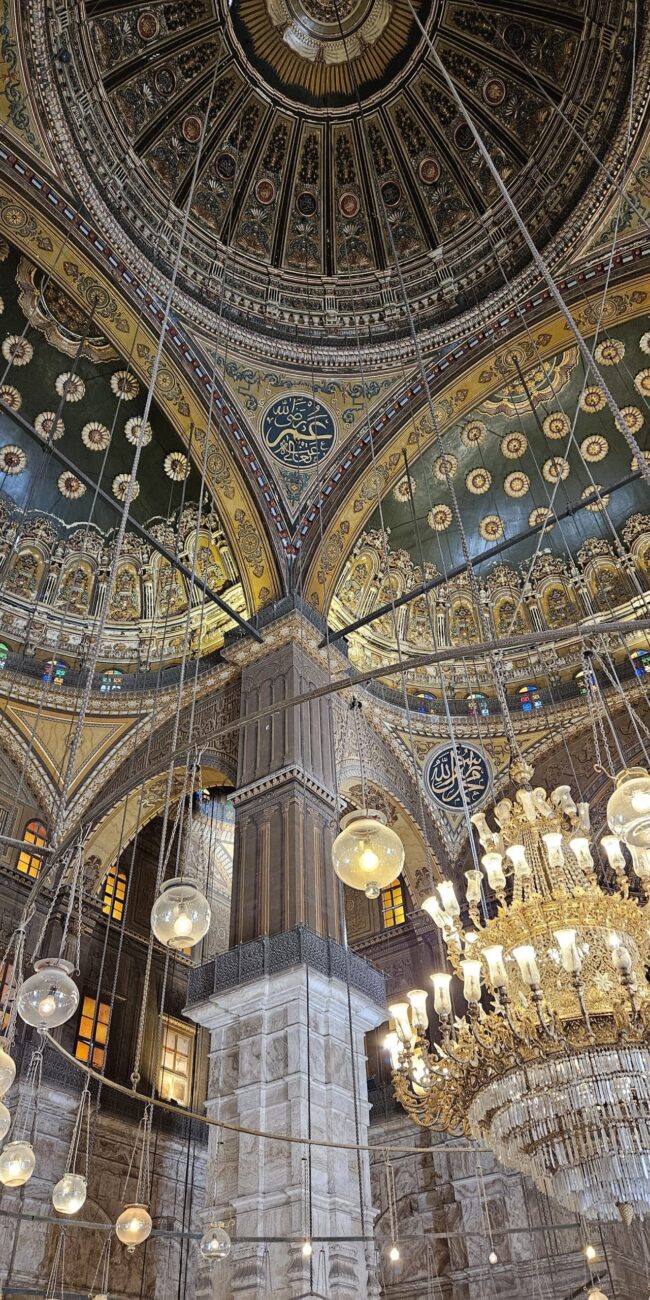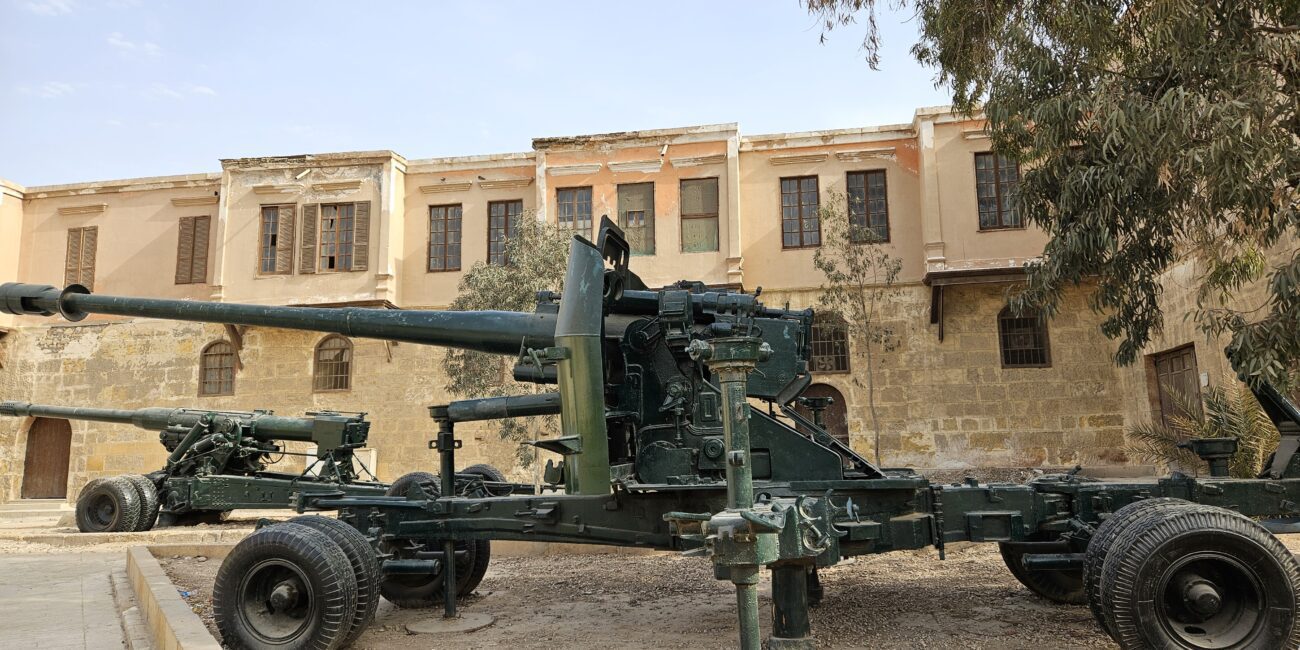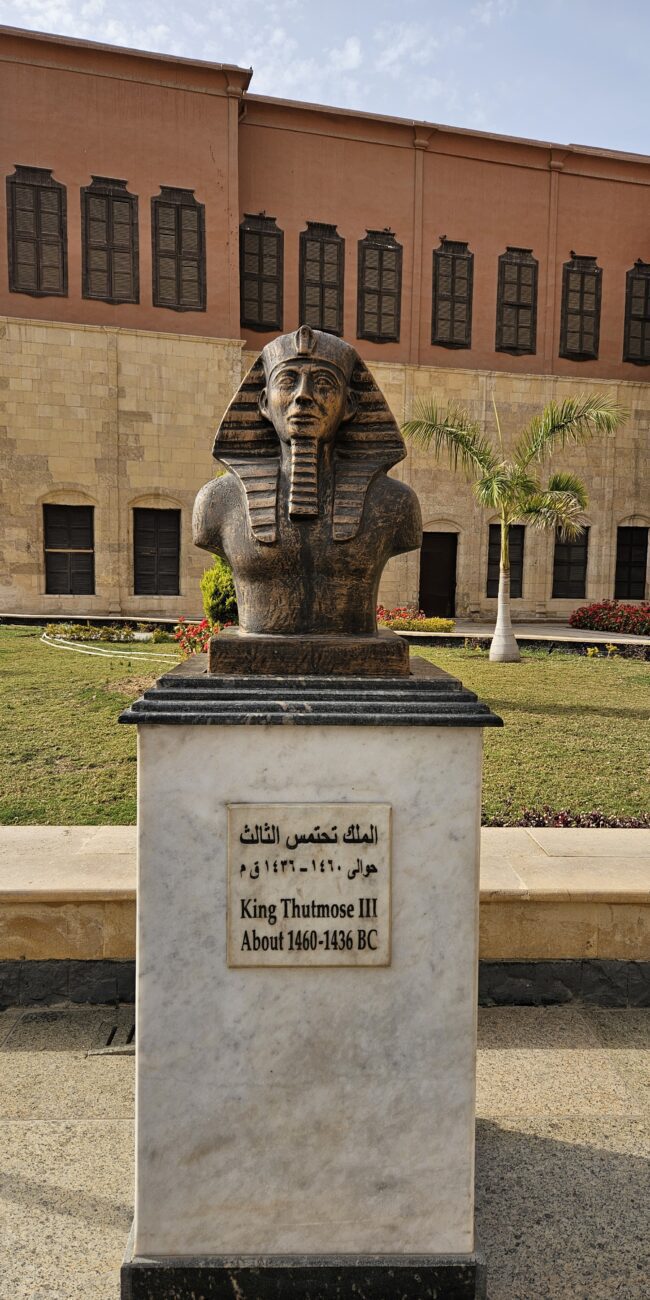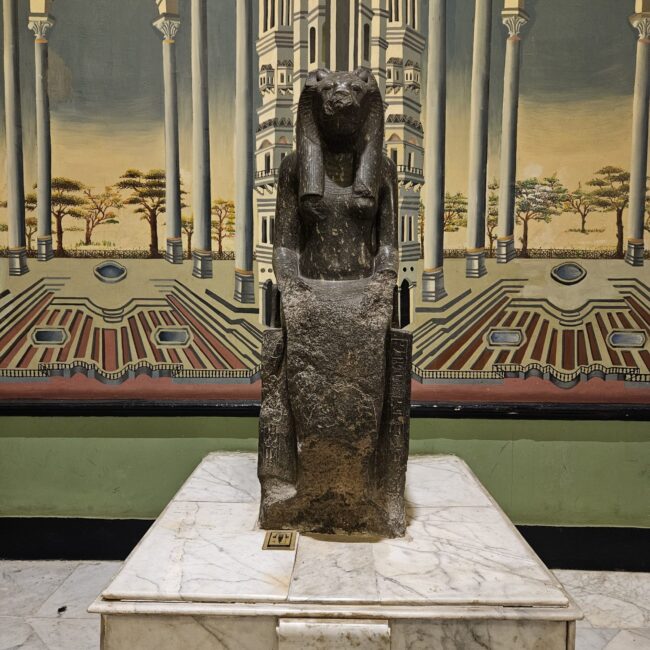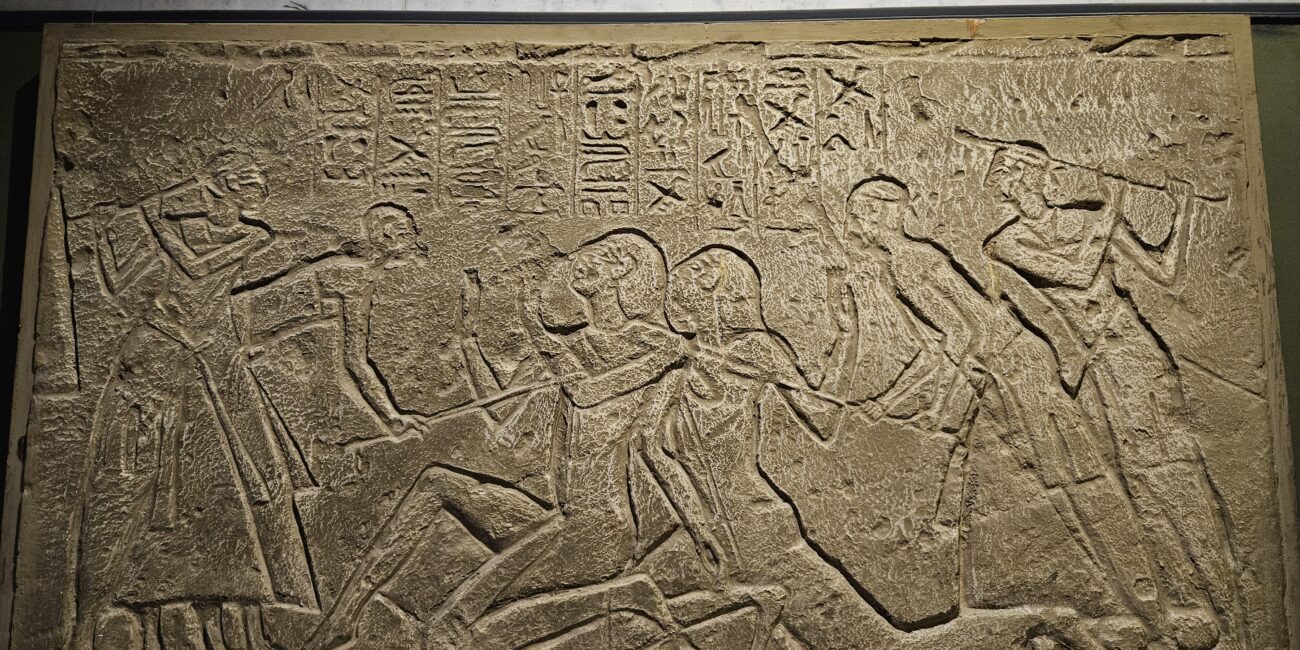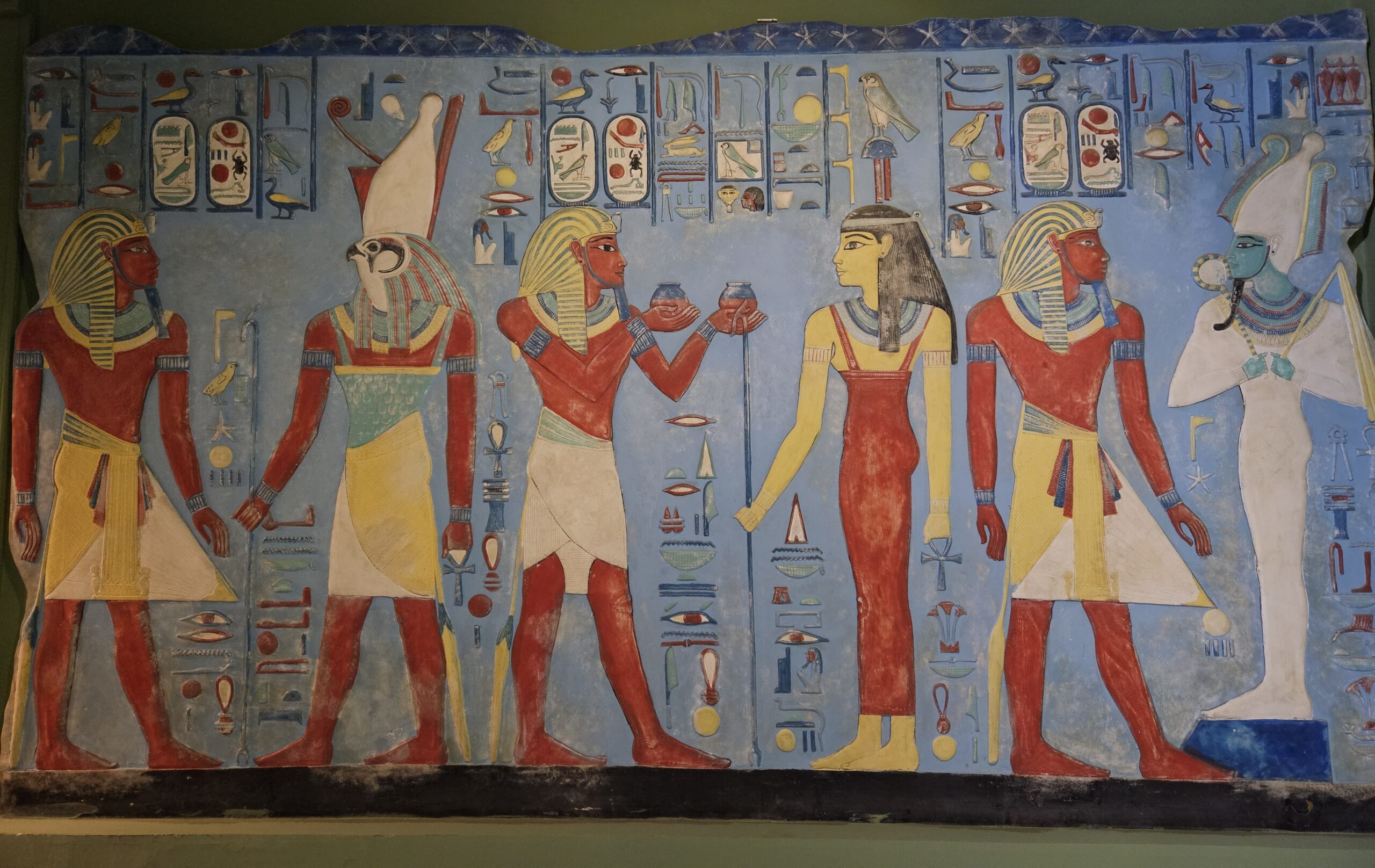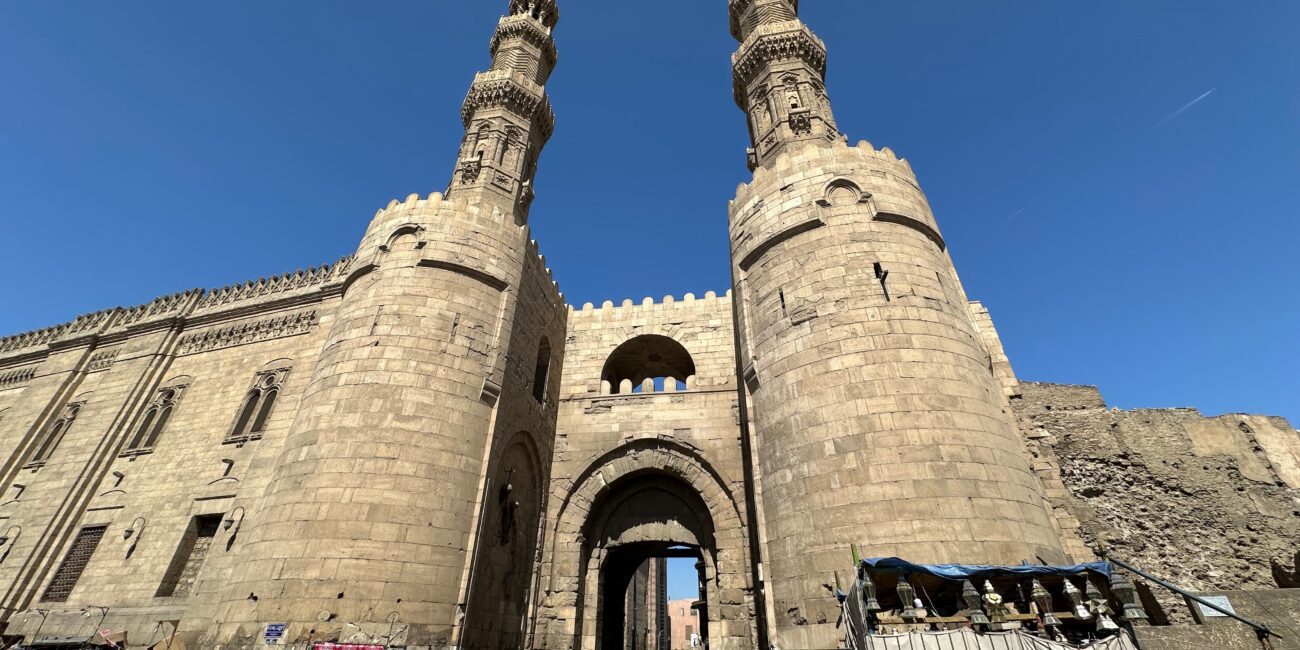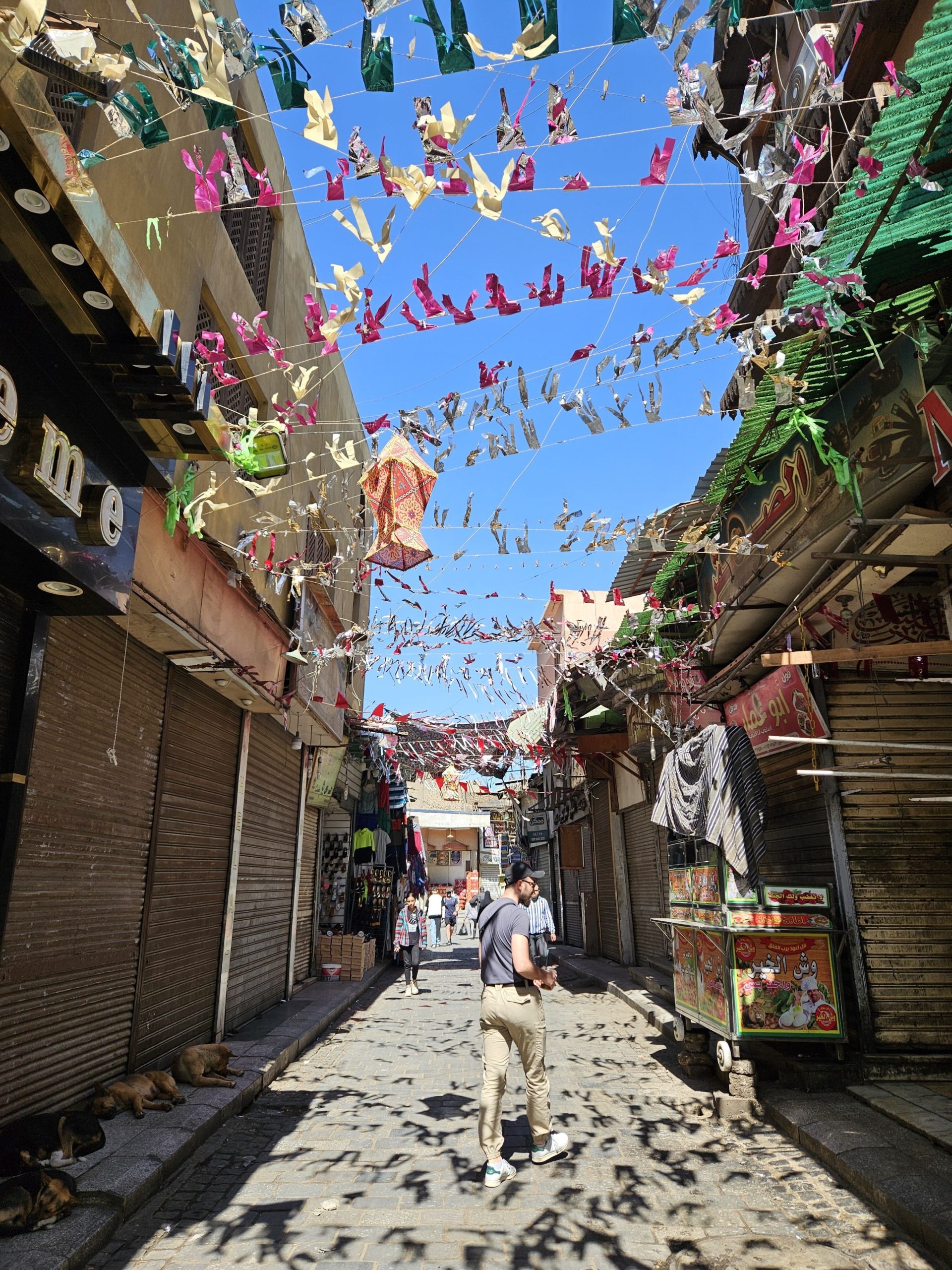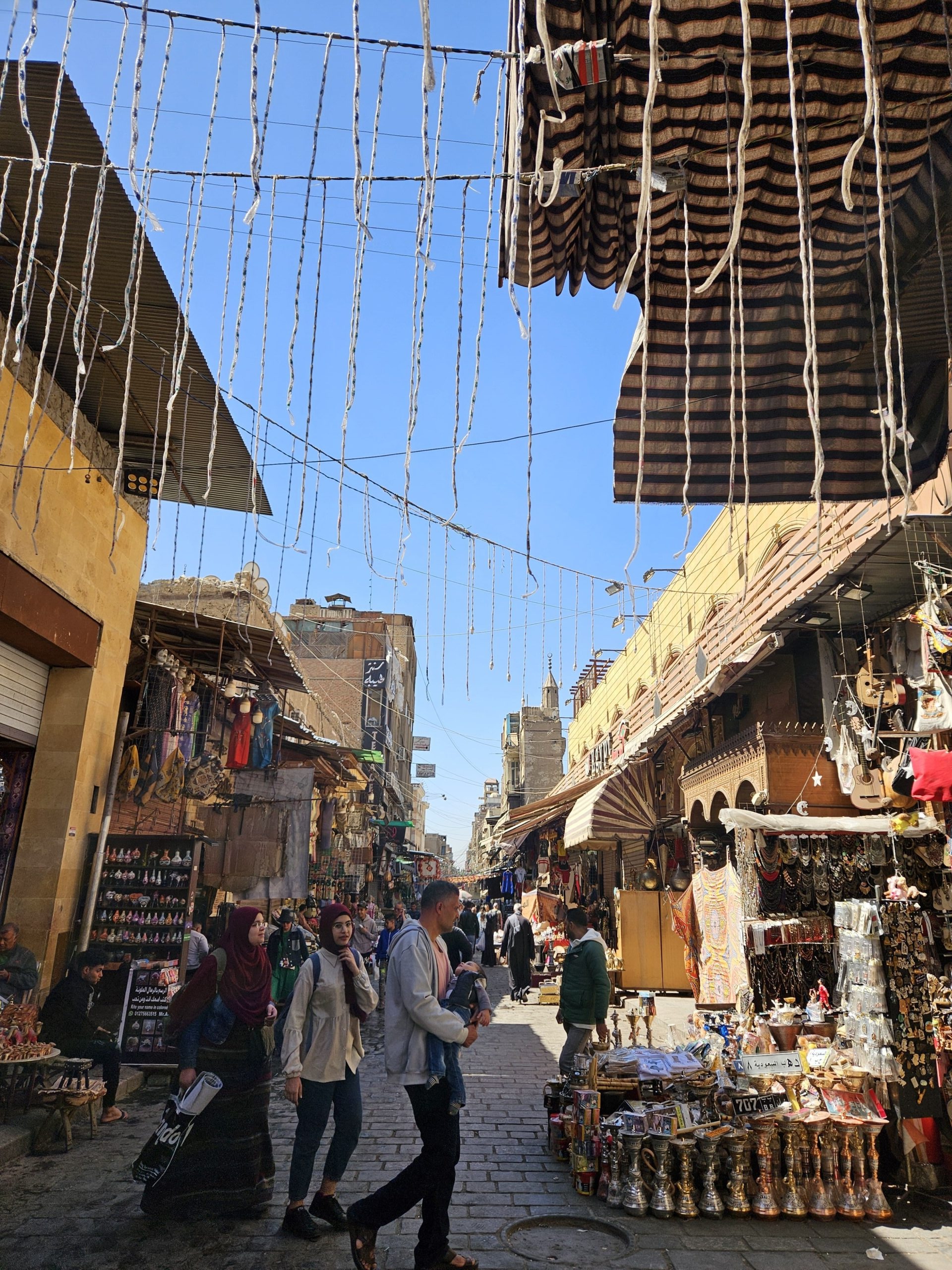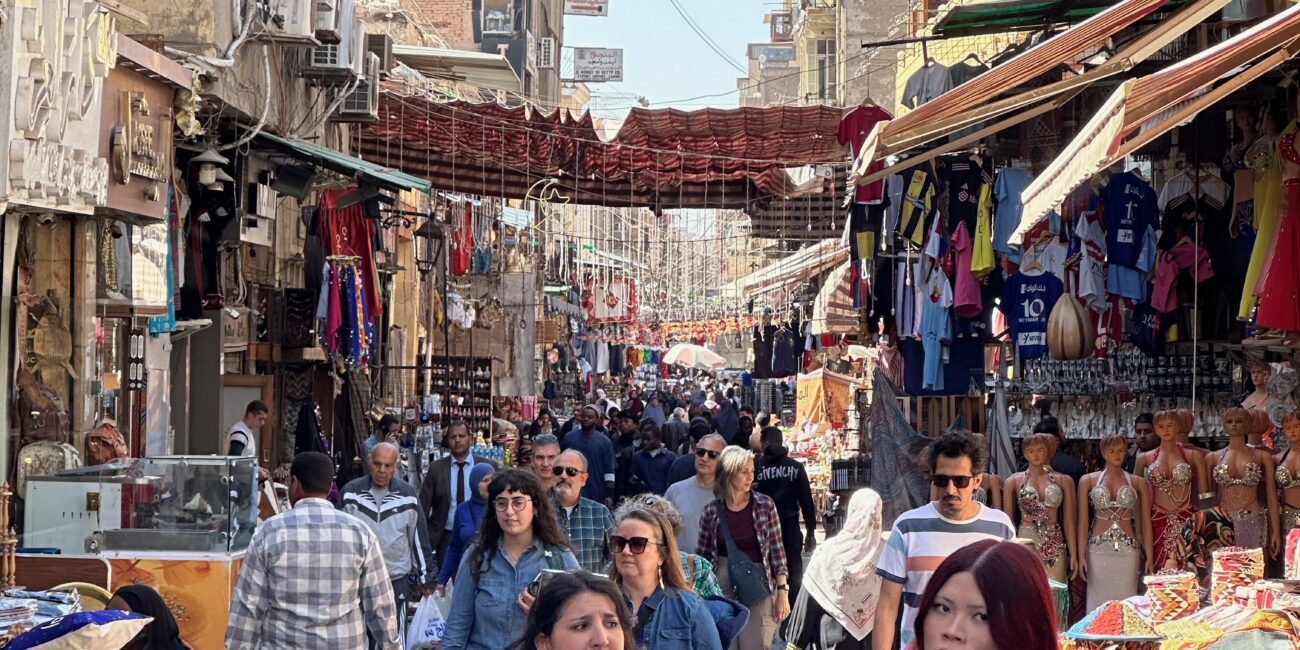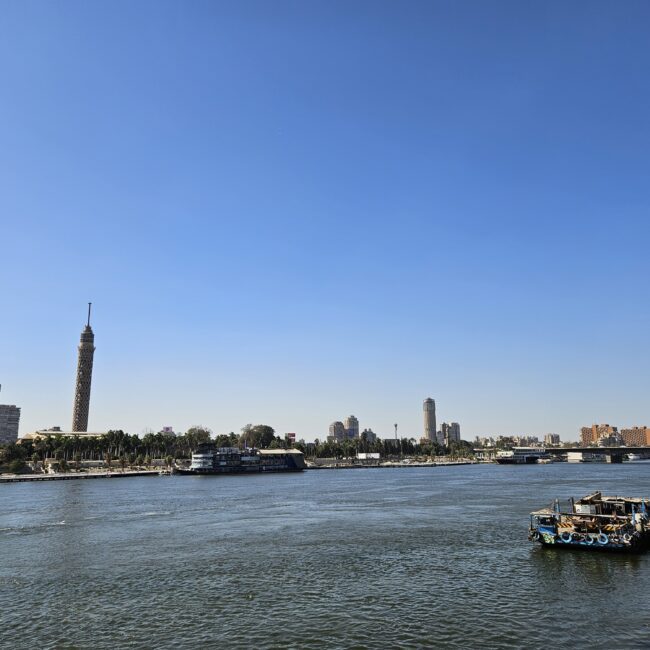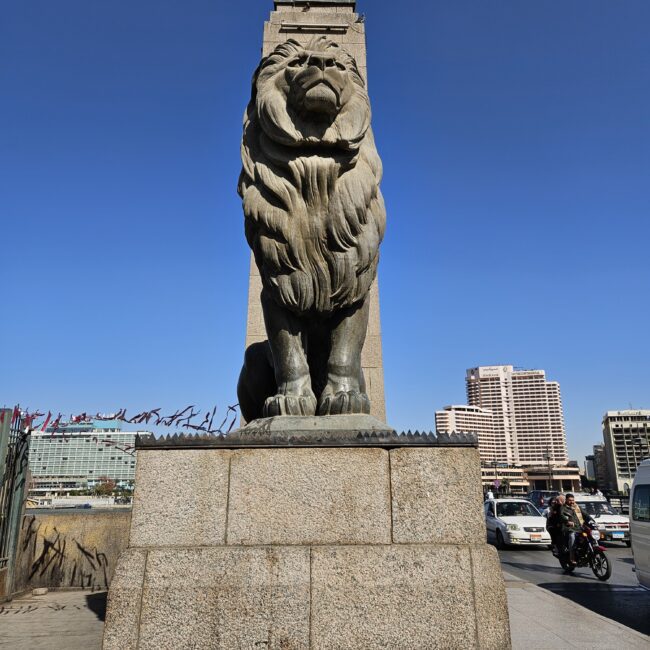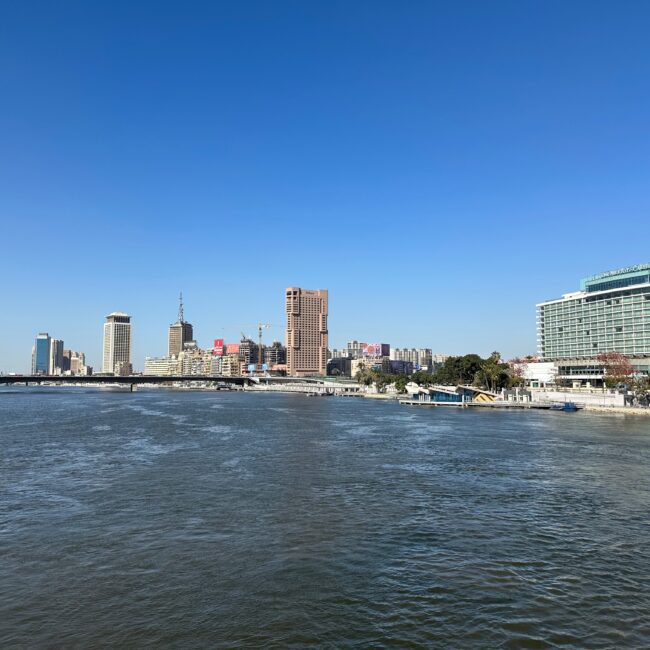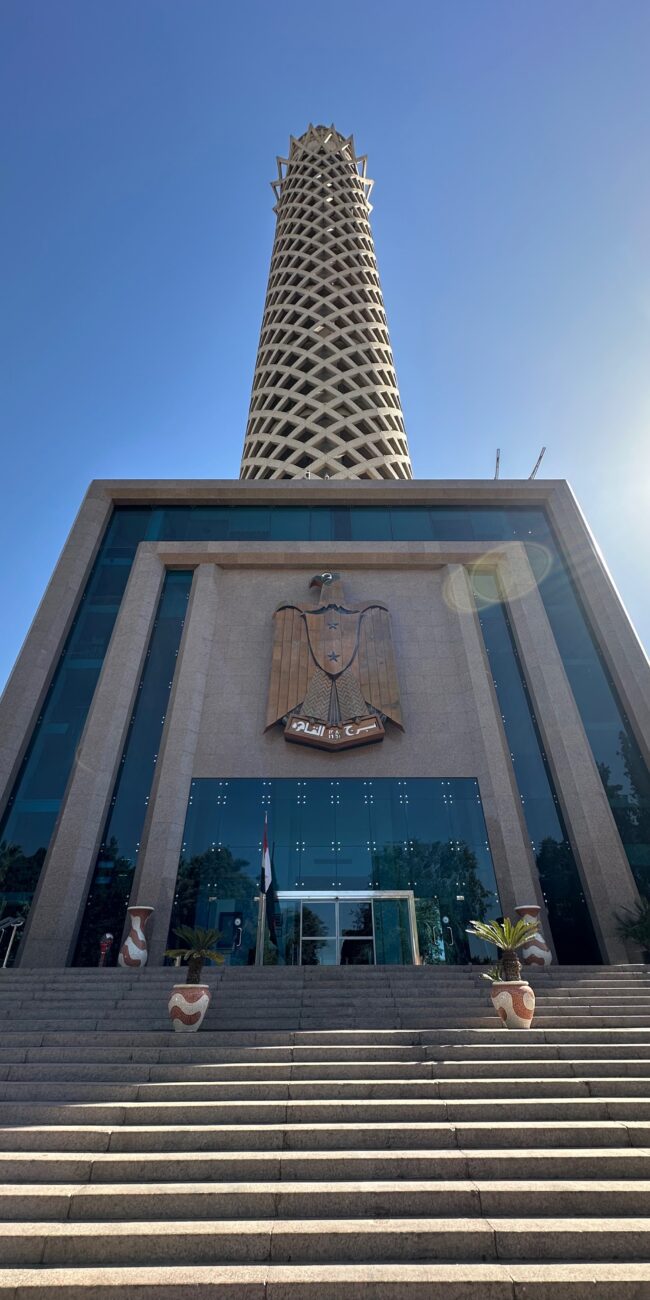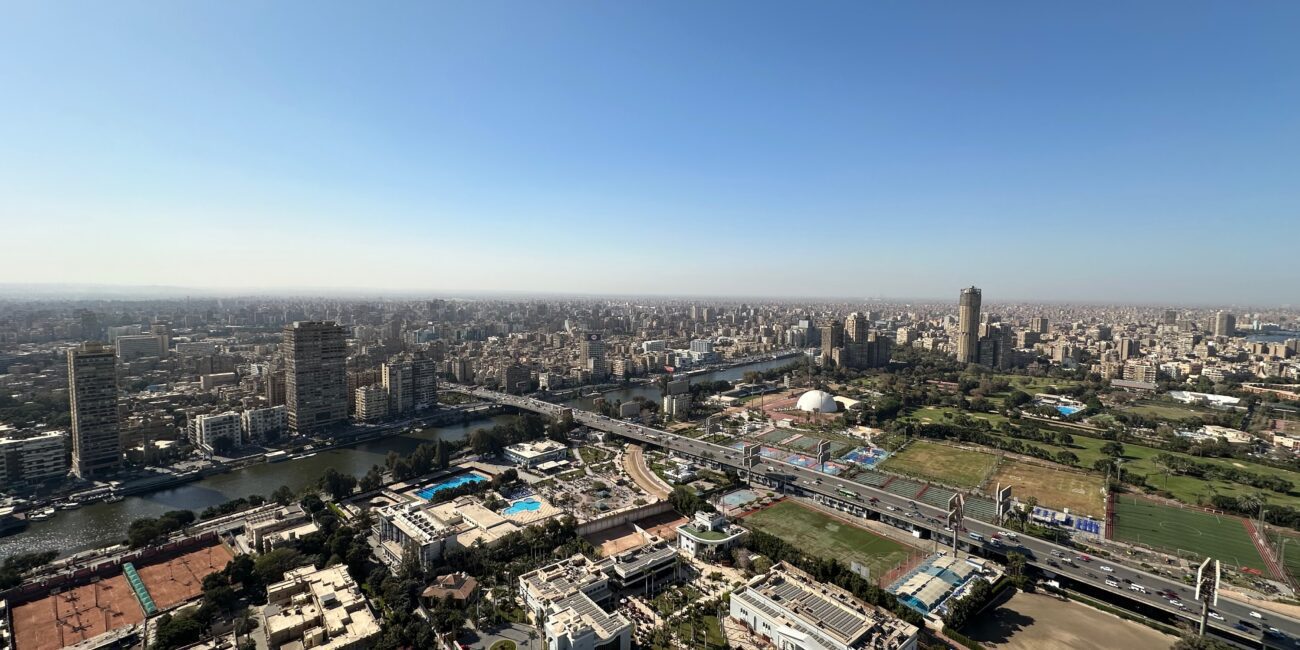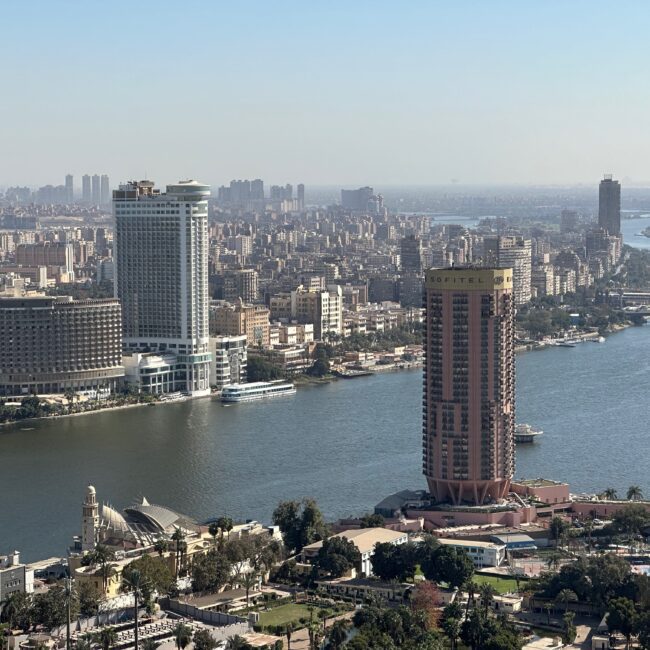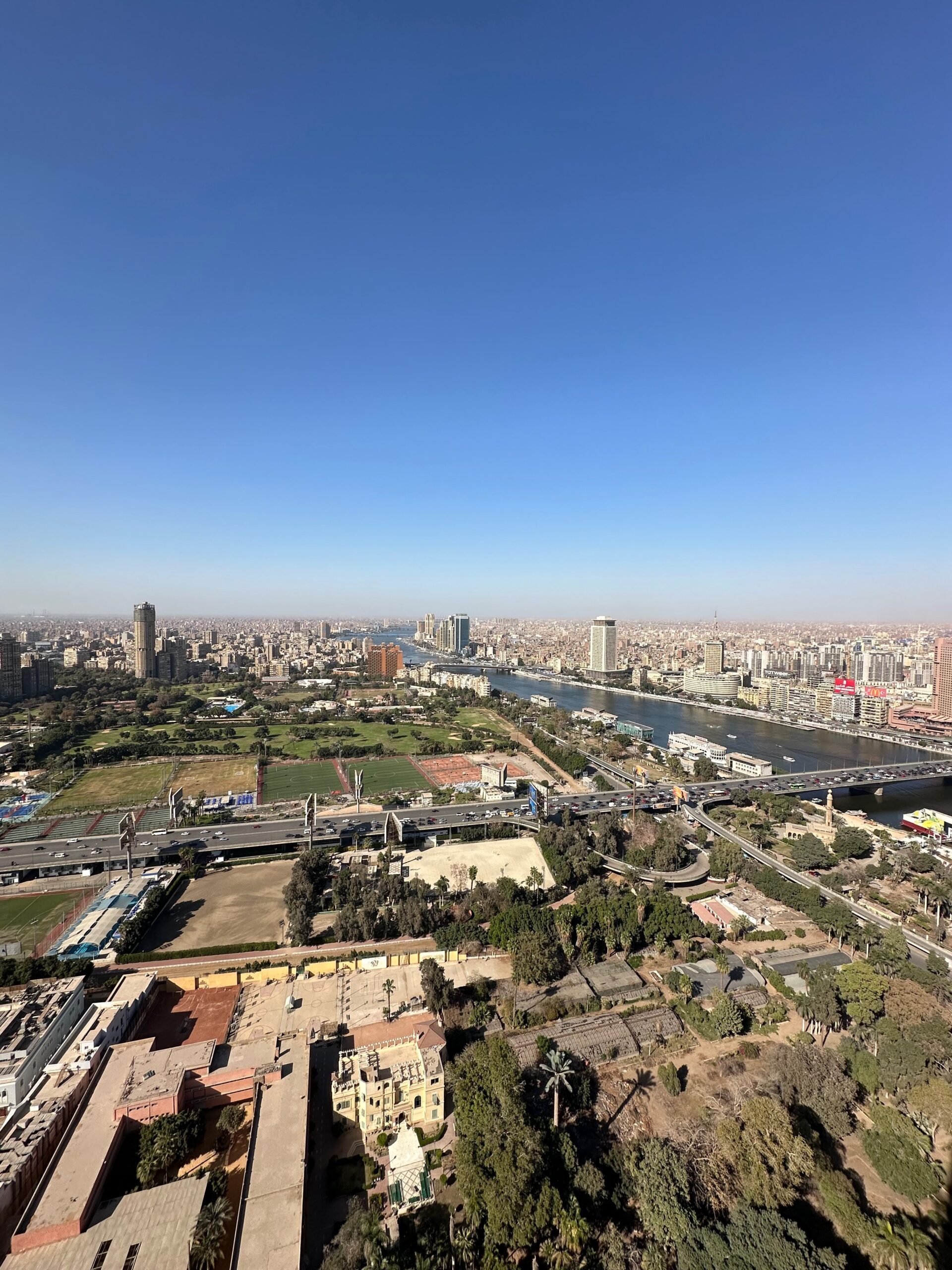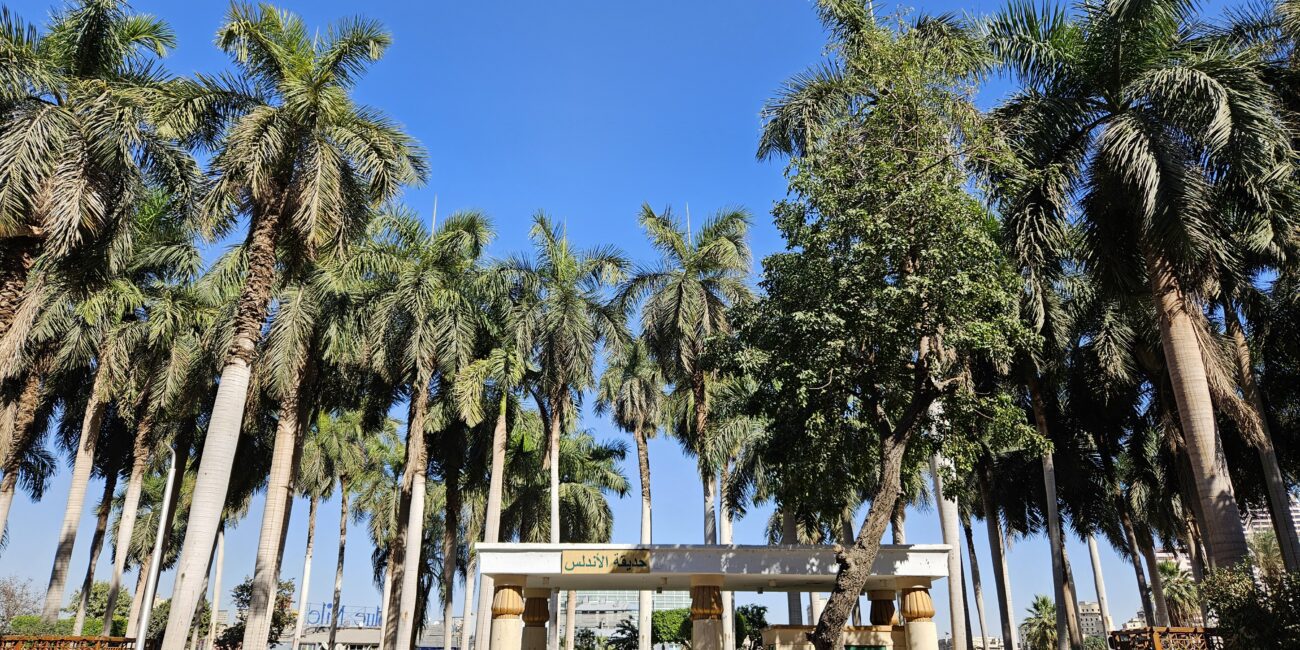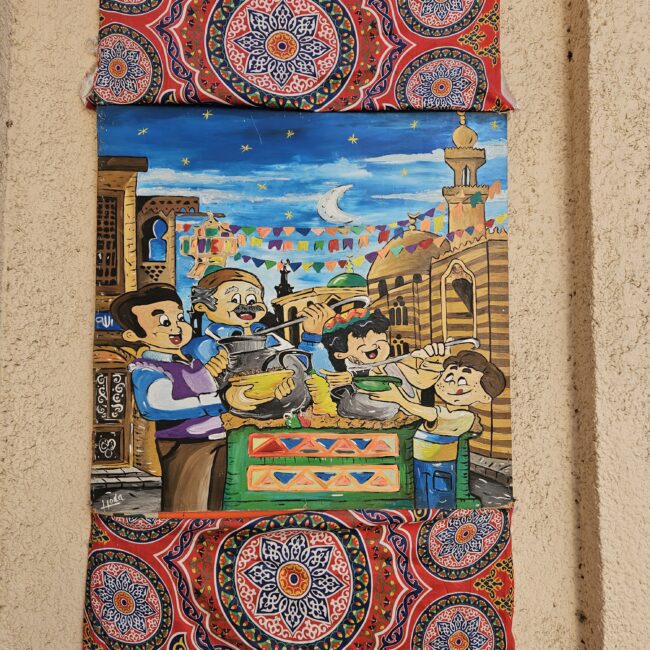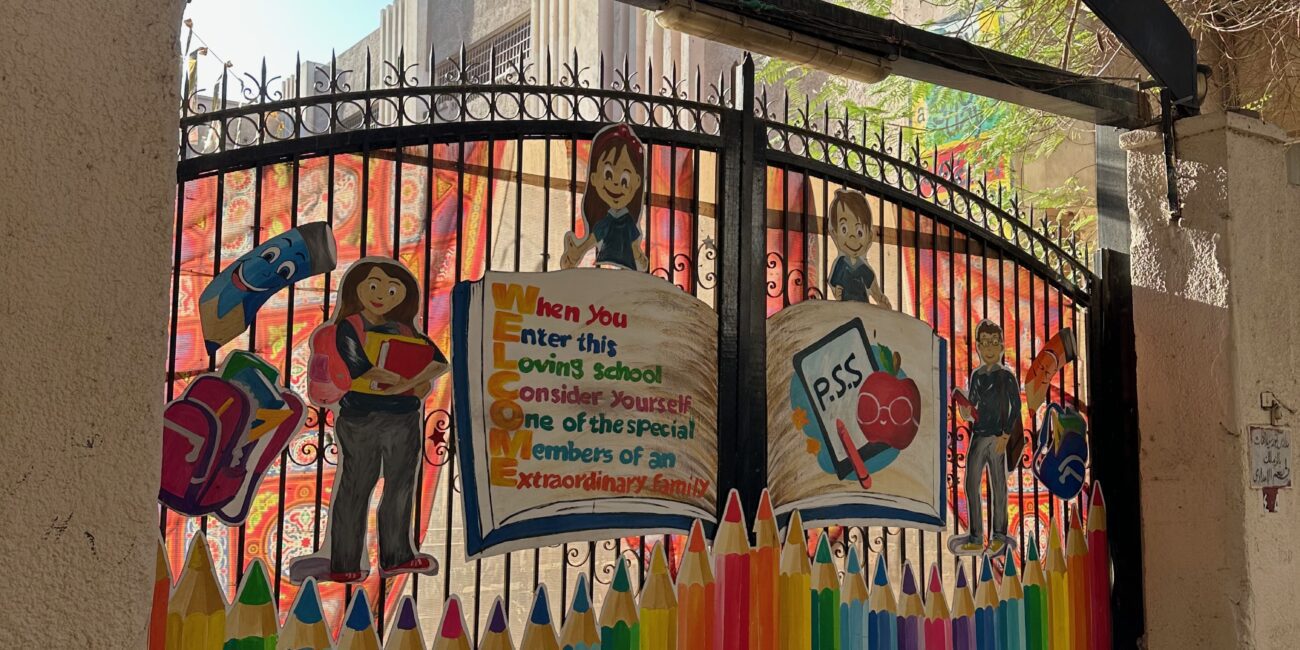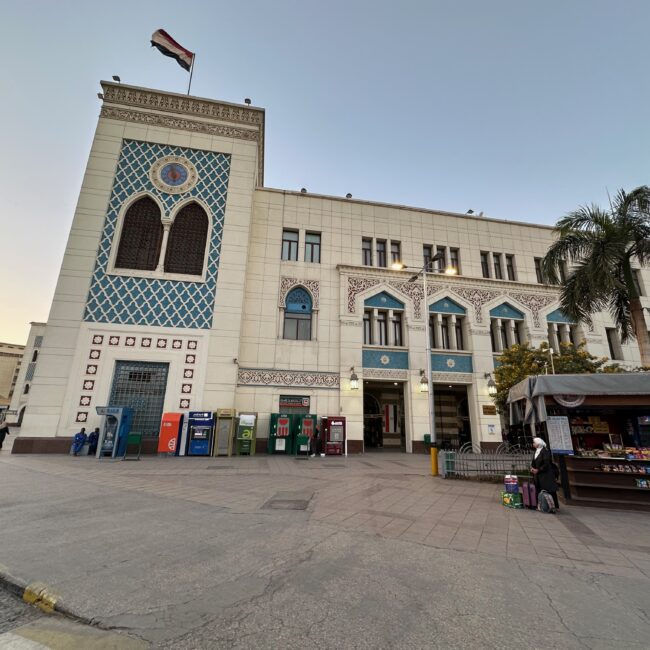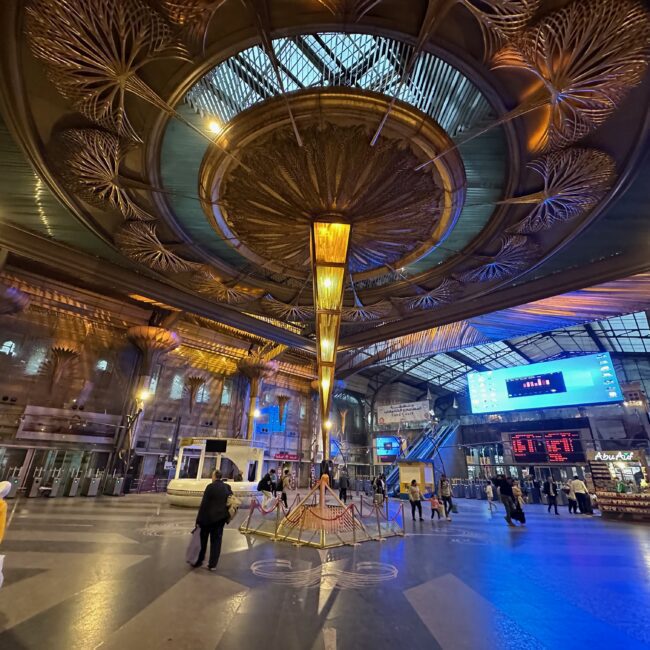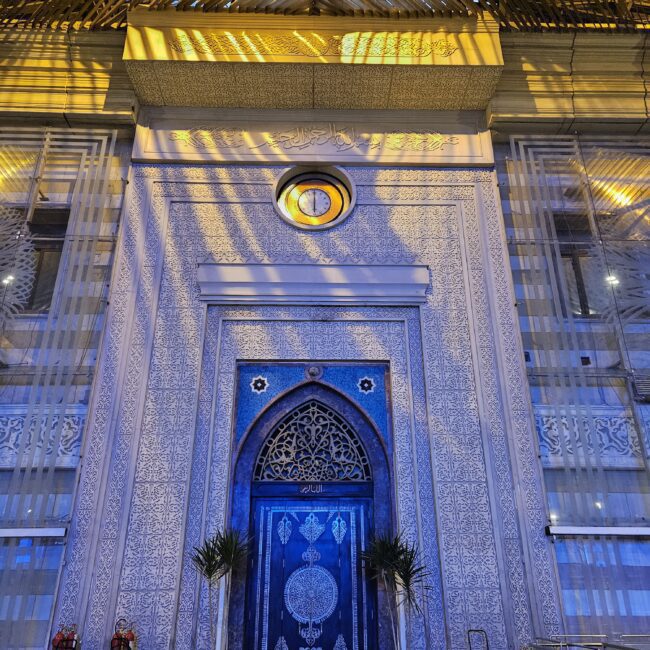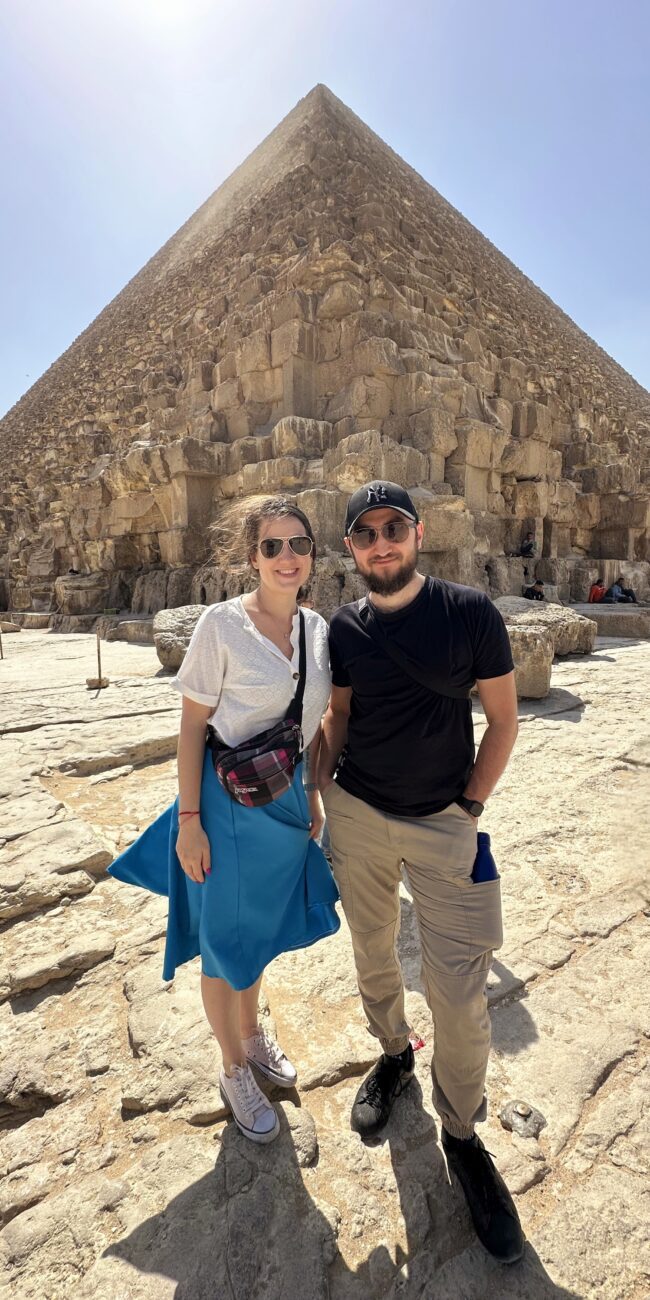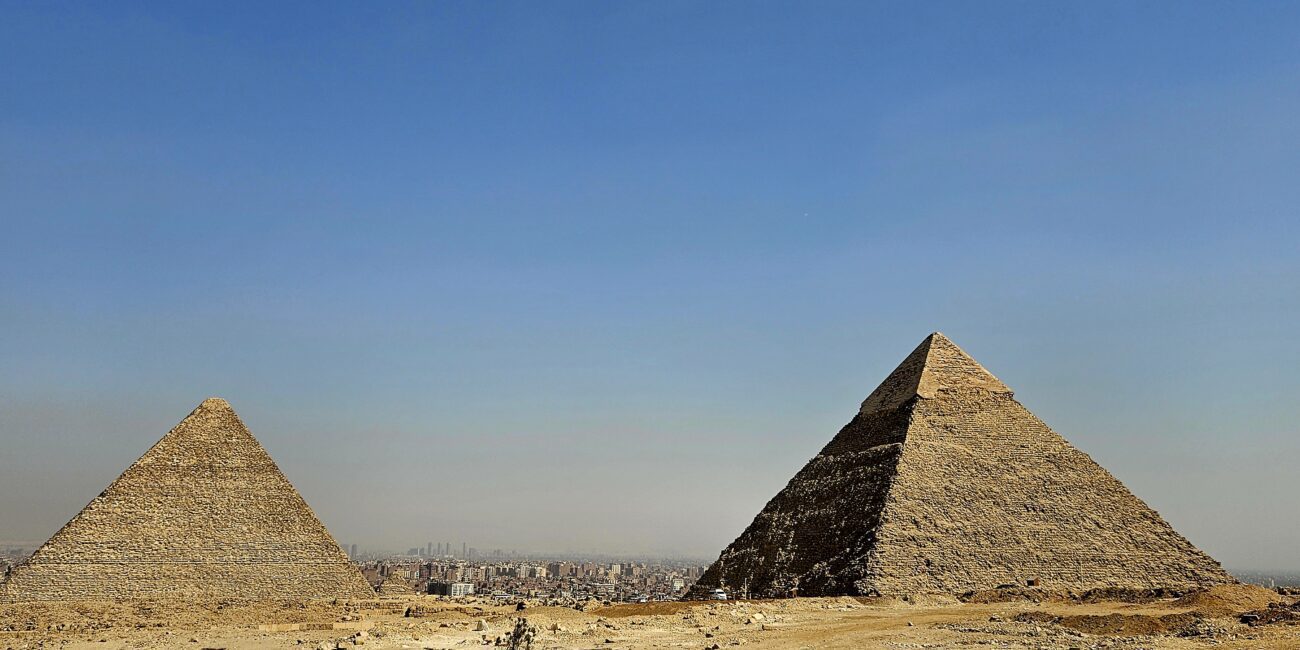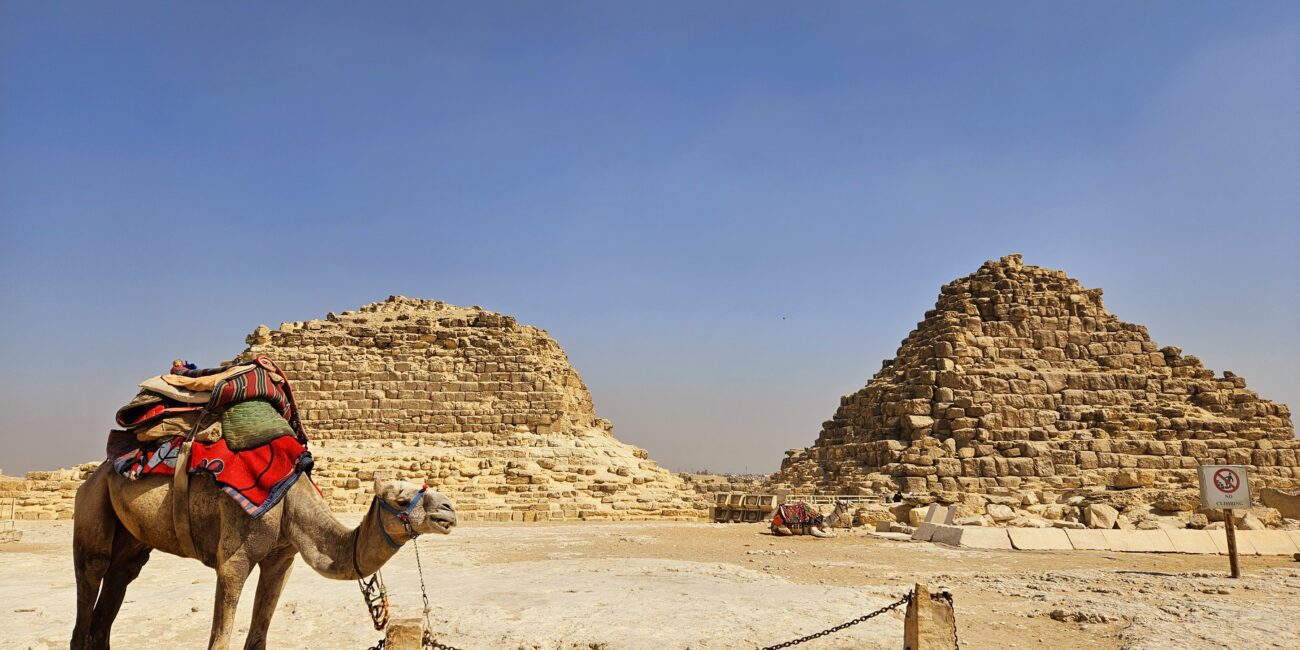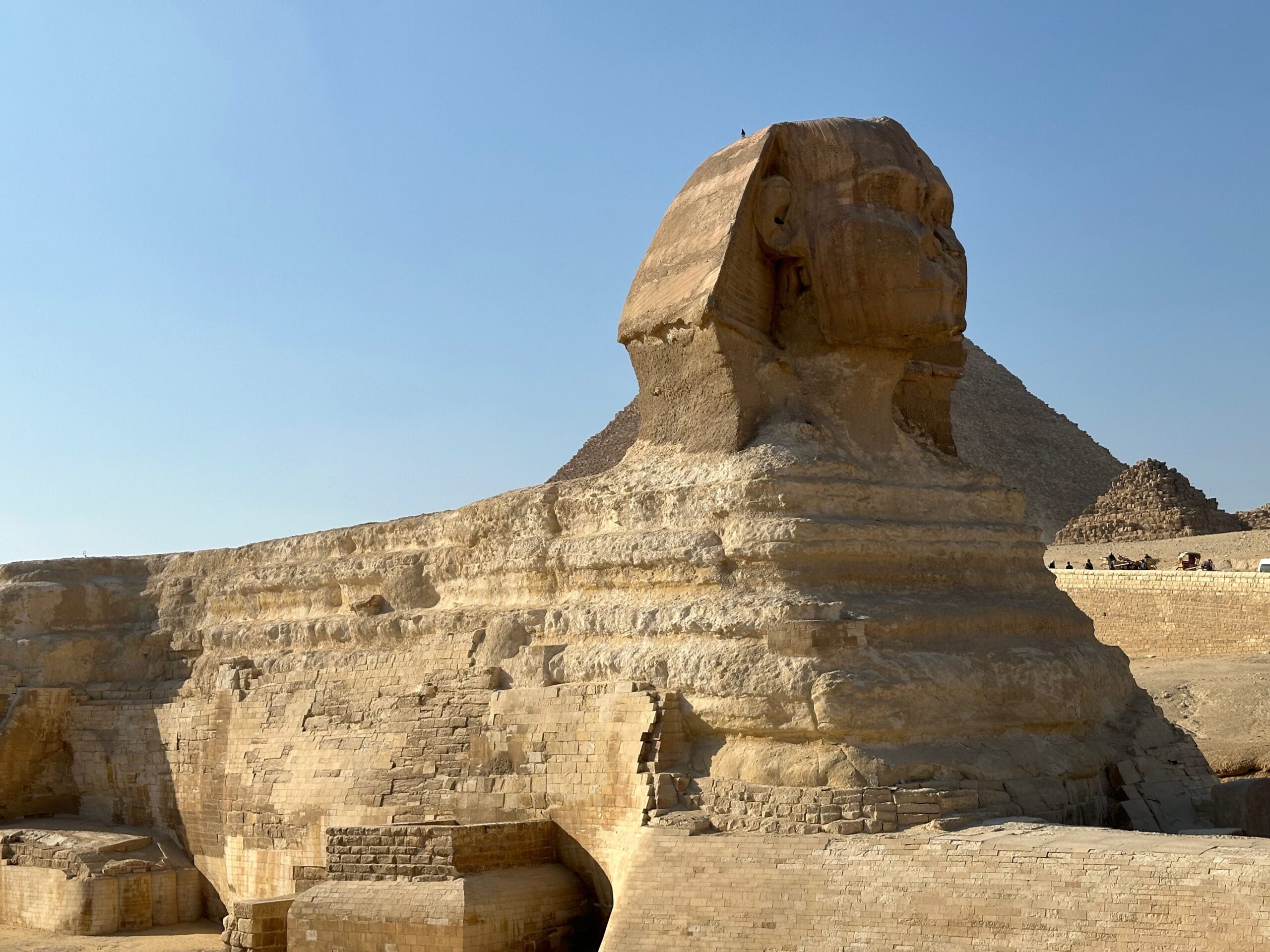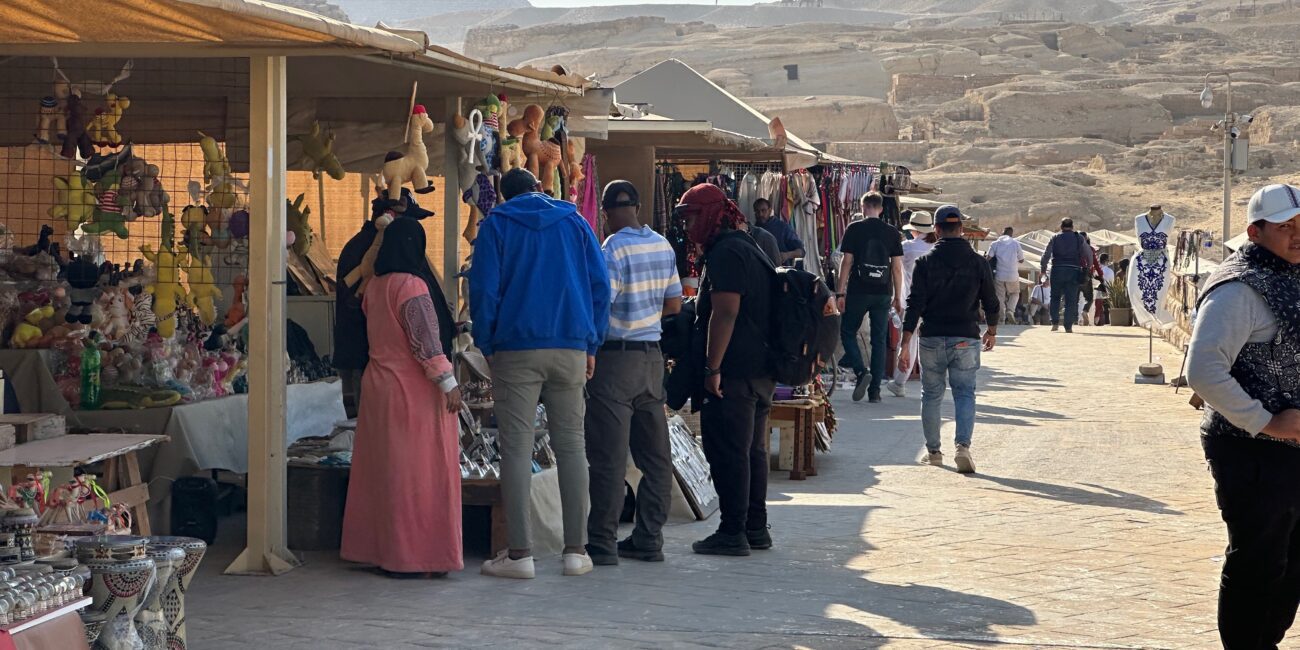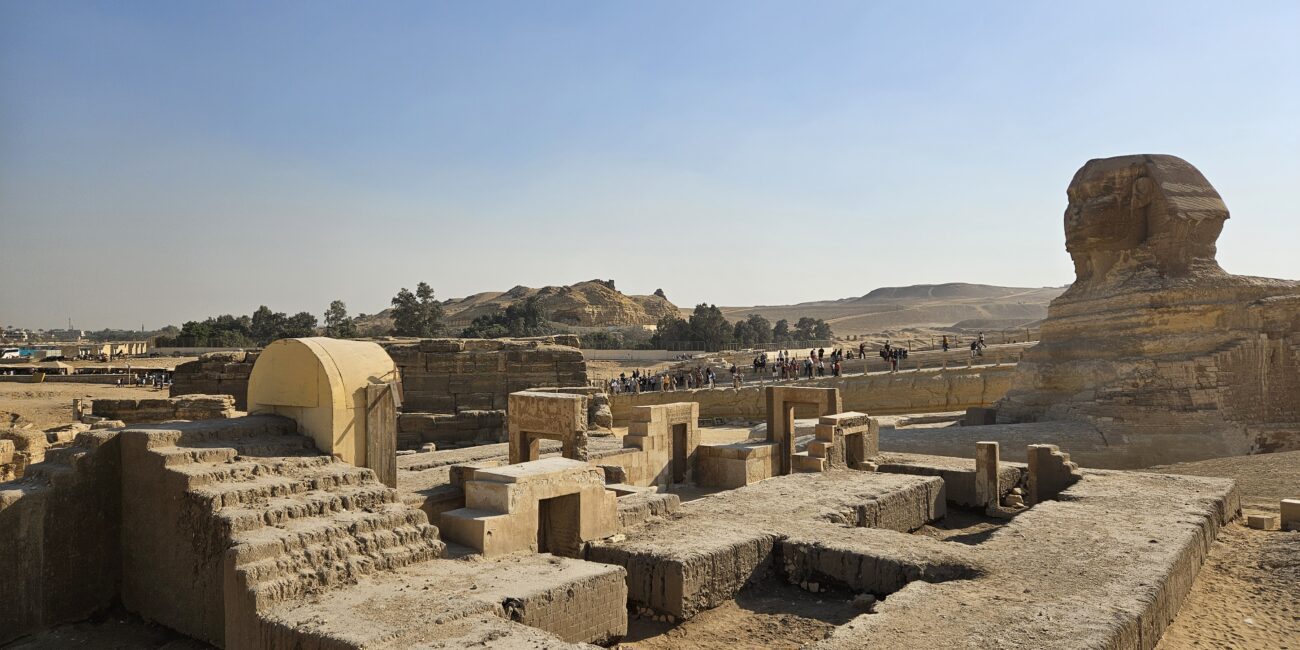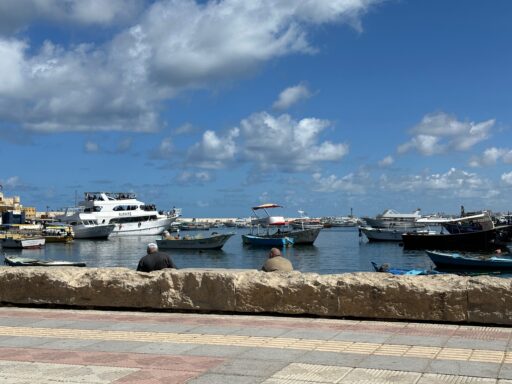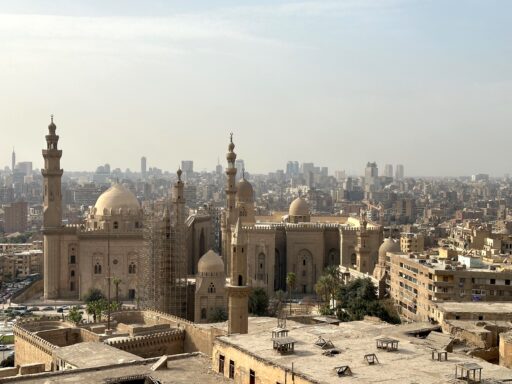This post is also available in:
Polski
Hello! 👋
A trip to Cairo and Giza is a unique experience ️🏜️. It allows you to travel back in time to the heart of an ancient civilization 🏺 while seeing how modern Egypt pulsates 🇪🇬. From the ancient pyramids of Giza ️🏛️ to the pulsing streets of Cairo 🌆, our trip was full of surprising moments that we will long remember. In this report, we share our impressions of these places, describing both the most important sights and less obvious attractions to discover ️🗺️.
If you’re interested in the details of our Egypt trip, please read on at this link! There you will find descriptions of the places we visited, as well as practical tips 📝. They will help you better plan your trip and avoid potential trouble.
How did we move between attractions?
During our trip between attractions in Cairo and Giza, we mostly traveled by car, which allowed us the flexibility and freedom to explore. We did not drive into downtown Cairo, however, as we used Uber, which is cheap and convenient there. This avoided the hassle of parking and navigating crowded streets. We also used the subway several times, which is an inexpensive option and well connected to the city’s highlights.
Cairo Citadel
The Cairo Citadel is one of the most important and impressive monuments in Cairo, and a key point on the map of any trip through the city. Located on Mokattam Hill, it towers over Cairo and offers breathtaking views of the entire city. The citadel was built in the 12th century by Sultan Saladin, who wanted to fortify the city against the Crusaders. For centuries it was the residence of Egyptian rulers and a strategic defense center.
The most prominent landmark of the Citadel is the Muhammad Ali Mosque, also known as the Alabaster Mosque because of its magnificent alabaster walls. It is a monumental building that impresses both with its exterior architecture and interior decorated with rich details and ornaments. The mosque is distinguished by its large dome and two slender minarets, and its courtyard and interior are ideal for moments of reflection in the shadow of history.
The Cairo Citadel is not only a place of great historical significance, but also a vantage point from which to view the Cairo skyline. The view of the pyramids on the skyline brings to mind the might of centuries past, reminding us of the majesty of ancient Egypt.
👉 For more information, visit the official government website – click here.
National Military Museum in Egypt
Egypt’s National Military Museum, located within the Cairo Citadel, is one of the most important museums of its kind in the country. Its exhibits show the history of Egypt’s armed forces from ancient times, through the Islamic and Ottoman periods, to modern conflicts such as the Suez Crisis and the 1973 war. The museum displays numerous artifacts, including weapons, uniforms, military decorations and maps and battle models.
The museum’s exterior features large military equipment such as tanks, artillery and aircraft. The interior, meanwhile, is decorated with historical paintings that illustrate key moments in the history of Egypt’s armed forces.
The museum, which is part of the Citadel complex, is easily accessible to visitors. You can easily combine a visit to it with other attractions. It’s an ideal place to see both elements of Egypt’s military history and marvel at the Citadel’s impressive architecture.
👉 For more information, visit the official government website – click here.
Bab Zuweila
Bab Zuweila is one of the three surviving gates of Cairo’s medieval walls. Built in the 11th century during the Fatimid dynasty, Bab Zuweila served as both a fortress and a symbol of the power of Islamic Cairo. The gate is adorned with imposing minarets, which are a distinctive feature of the city’s landscape.
Bab Zuweila was also the site of executions during the Middle Ages, which adds to its historical significance. The gate itself is an excellent example of Islamic defensive architecture, with thick walls and massive towers to protect the city from invaders.
👉 For more information, visit the official government website – click here.
Khan al-Khalili Bazaar
Khan al-Khalili is a famous bazaar in Cairo that has existed since the 14th century. It is located in the heart of the Islamic part of the city and is one of the oldest and most vibrant markets in Egypt. The bazaar’s narrow streets are filled with stalls selling a variety of goods, from traditional crafts, jewelry, textiles and spices to souvenirs and brassware.
It’s also a great place to grab a bargain, which is an integral part of the shopping experience at this bazaar. For lovers of history and culture, Khan al-Khalili is a must-see on the Cairo map, offering a glimpse into the daily lives of Egyptians throughout the centuries.
Qasr El Nil Bridge
The Qasr El Nile Bridge is one of Cairo’s most recognizable Nile crossings. It connects Tahrir Square to Gezira Island, which includes the Zamalek district. Built in 1933, it was the first bridge in Egypt made entirely of steel. Its distinctive features include four huge bronze lion statues that stand at either end of the bridge, symbolizing strength and majesty.
👉 For more information, visit the official government website – click here.
Cairo Tower
The Cairo Tower is one of the most prominent landmarks in the Cairo skyline. Located on Gezira Island, in the Zamalek district, the tower is 187 meters high and taller than the Great Pyramid of Giza. It was completed in 1961 and for a long time was the tallest structure in Africa.
The tower offers panoramic views of the entire city, including the Nile, the Cairo Citadel and the pyramids, making it a popular tourist destination. At the top is a revolving restaurant where guests can enjoy views of Cairo while dining.
The tower was designed in a style inspired by lotuses, which were a symbol of ancient Egypt. Its architecture, combined with modern elements, reflects both the country’s past and present.
👉 For more information, visit the official government website – click here.
Cairo’s Zamalek district
Zamalek is an elegant and affluent neighborhood of Cairo, located on Gezira Island, surrounded by the waters of the Nile. It is one of the greenest parts of the city, full of parks, hotels, embassies and sports clubs.
The Zamalek district also offers numerous cultural attractions, including the Cairo Opera House and many art galleries and museums. It also stands out for its more peaceful atmosphere compared to the crowded city center, making it an ideal place for a relaxing stroll along the Nile.
Ramsis station
Ramsis Station is Cairo’s main train station, serving as the central transportation hub for travelers throughout Egypt. It is located in the heart of the city and is the most important transportation hub, from where trains depart to various corners of the country, including Alexandria, Aswan, Luxor and other major cities.
The station was named after Pharaoh Ramses II, whose impressive statue stood for many years in front of the building’s entrance. The statue has now been moved to the Grand Egyptian Museum, but the station’s name remains.
The station is not only an important transportation hub, but also a bustling place where thousands of people, both locals and tourists, pass through daily. Ramsis Station also offers a number of amenities, such as stores, restaurants and traveler information desks.
The station underwent modernization in 2009, which improved its infrastructure and aesthetics. Still, due to the crowds and heavy traffic, especially during rush hour, it is advisable to exercise caution when using this transportation hub.
Pyramids of Giza
The Pyramids of Giza are one of the most important and recognizable monuments in the world, and a symbol of ancient Egypt. The pyramid complex, located west of Cairo, consists of three main pyramids that were built as tombs for the pharaohs:
- The Great Pyramid of Cheops (Chufu) – the largest of the pyramids, originally measuring 146.6 meters high, built around 2560 BC. It is one of the seven wonders of the ancient world and the only one that has survived to this day. The construction of this gigantic structure, consisting of millions of limestone blocks, remains a mystery to archaeologists to this day.
- Pyramid of Chephren (Chafre) – the second largest pyramid in Giza, belonging to Pharaoh Chephren, son of Cheops. It is slightly lower than the Great Pyramid, but appears taller due to its higher position on the plateau and the surviving part of the original enclosure on top.
- Pyramid of Mykerinos (Menkaure) – the smallest of the three main pyramids, built for Pharaoh Mykerinos. It measures about 65 meters high, and its lower part was originally clad in pink granite.
👉 For more information, visit the official government website – click here.
Beware of scammers
When visiting the Pyramids of Giza, you should be especially careful, as scammers and swindlers are a fairly common problem at this tourist site. Self-appointed guides and “employees” often offer services such as taking photos, camel rides, or other small forms of assistance – often without asking. After using their services, they may suddenly demand exorbitant fees, despite earlier assurances that the service is free or nominal.
Similar situations occur when selling tickets. Scammers try to trick tourists into thinking they are official employees and offer tickets at inflated prices. Therefore, always buy tickets only at authorized outlets and avoid those offering “exclusive” entrances.
If you are planning a camel ride, agree on the price in advance. Sometimes tourists have to pay more than agreed upon to get off the camel. It’s best to be firm and clearly agree on prices and terms of service from the beginning. Being cautious will help you avoid unpleasant situations and fully enjoy your visit to this remarkable place.
Great Sphinx at Giza
The Great Sphinx of Giza is one of the most famous and mysterious monuments of ancient Egypt. It is located near the pyramids. The Sphinx combines the body of a lion and the head of a pharaoh, most likely Chephren (Khafre), who ruled in the Fourth Dynasty, around 2500 BC. Carved from a single block of limestone, it is about 73 meters long and 20 meters high. This makes it the largest monolithic sculpture in the world, carved directly from a single piece of rock.
The monument was probably meant to symbolize the pharaoh’s strength and power, as well as guard the Giza necropolis. The Great Sphinx has aroused awe and curiosity for centuries, and its enigmatic smile and damaged nose have been the subject of much speculation and myth, adding to its mystery.
Over the centuries, the Sphinx has suffered numerous damages from both erosion and human actions. One of the most striking features of the Sphinx is the missing nose, which was probably destroyed by human action, although the exact cause remains a topic of speculation.
👉 For more information, visit the official government website – click here.
Summary
Our trip to Cairo and Giza provided us with unforgettable sights and experiences. Although we didn’t get to visit the Grand Egyptian Museum, which is still on our list of places to see, we spent some time exploring the area by car. This allowed us to better feel the pulse of the city and see it from a different, more local perspective. Driving around Cairo provided us not only with sights, but also with a better understanding of its unique atmosphere and daily life.
Cairo offers an unusual combination of ancient and modern, and driving in this metropolis is an adventure in itself. Despite a few minor obstacles, our trip provided us with many unforgettable experiences that will remain in our memories for a long time.
If you enjoyed our coverage of Cairo, check out our article on Alexandria here 🏛️.

